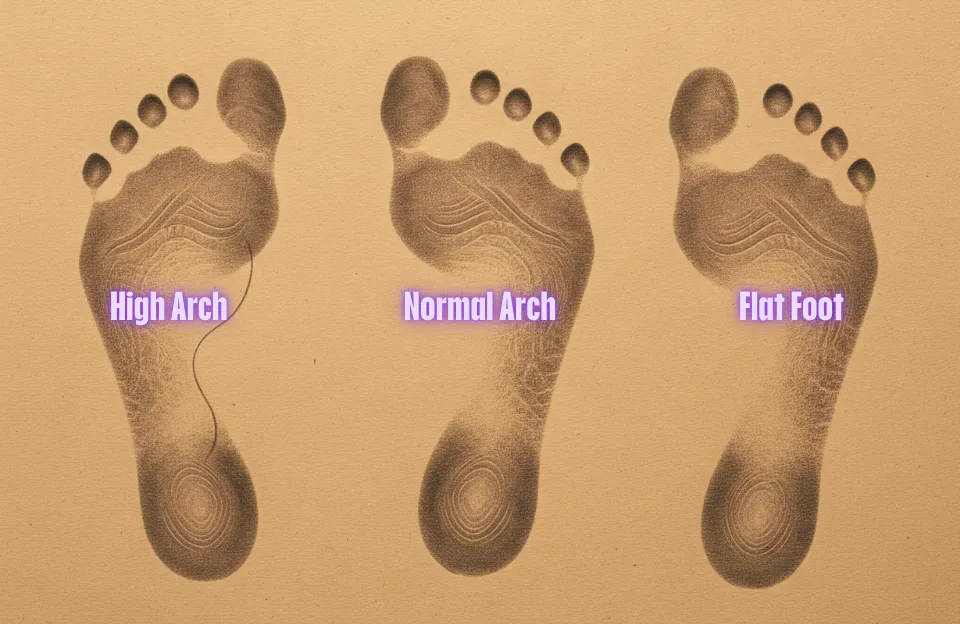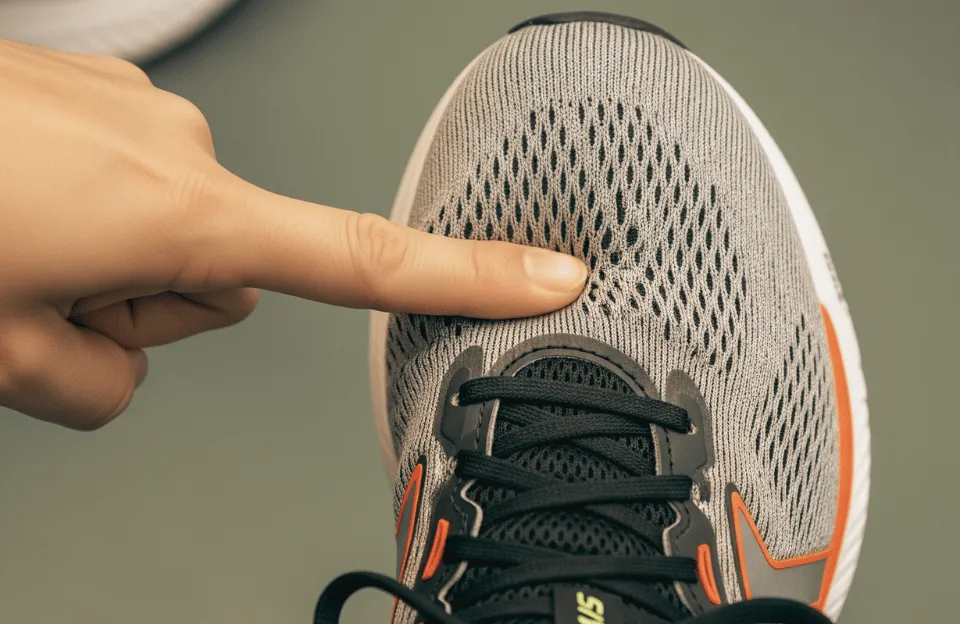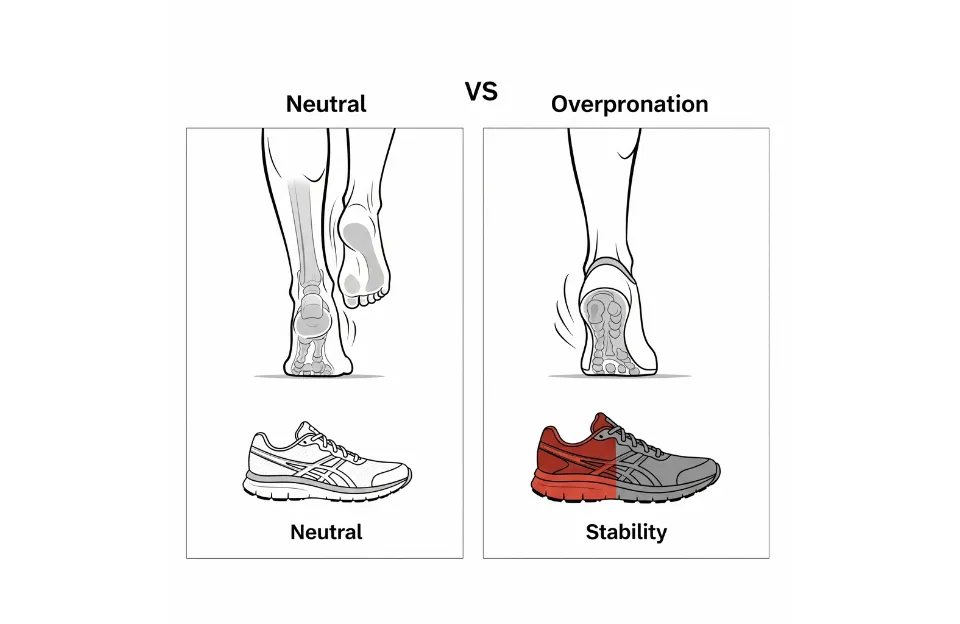
Ever walked into a running store or browsed online and felt… completely overwhelmed? You see a wall of shoes in every color imaginable, with terms like “pronation,” “stability,” and “heel-to-toe drop” being thrown around. It can feel like you need an engineering degree just to pick out a pair of sneakers.
Here’s the good news: you don’t. You’re in the right place.
The real secret to how to choose running shoes isn’t about memorizing technical jargon. It’s about understanding one simple thing first: YOU. The best shoe on the market is worthless if it isn’t the right shoe for your feet, your body, and your goals.
This guide is designed to cut through the noise. We’ll walk you through a few simple questions to ask yourself before you even start shopping. By the end, you’ll know exactly what you need, making it so much easier to find that perfect, comfortable pair to kickstart your running journey.
(Just so you know: As a runner myself, I only recommend gear I truly believe in. If you purchase through a link on this page, I may earn a small commission that helps me create more guides like this—at no extra cost to you. I really appreciate your support!)
Before You Even Shop: 3 Questions to Ask Yourself
Alright, before you fall in love with a cool color or a flashy design, let’s pause. The single most important part of finding the right shoe happens before you even look at one. It’s about understanding your own needs.
Think of it like this: you wouldn’t buy a car without knowing if you’ll be driving on highways or dirt roads. The same logic applies here. Answering these three simple questions will narrow down your options from hundreds to just a handful of perfect candidates.
Where Will You Be Running? (Road, Trail, or Treadmill)
The running surface you’ll be on is a huge factor. Shoes are designed with specific environments in mind.
- Mostly on Roads: If you’re running on pavement, sidewalks, or concrete, you’ll want a “road running shoe.” Their main job is cushioning to absorb the impact from these hard surfaces and provide a smooth ride.
- Mostly on Trails: Hitting the dirt paths, gravel, or rocky terrain? You need a “trail running shoe.” These are built tougher. They have deep, grippy lugs on the bottom for traction, and they often feature reinforced materials to protect your feet from rocks and roots.
- Mostly on a Treadmill: The treadmill belt is already a cushioned, predictable surface. You have flexibility here, but a lightweight, breathable road running shoe is usually the best choice to keep your feet from getting too hot.
What’s Your Running Goal? (Distance & Frequency)
Be honest with yourself here—there’s no wrong answer! Your goals determine how much durability and support you might need.
Are you training to complete your very first 5K? Or are you just looking to get out for a couple of miles, a few times a week, to stay active?
A shoe designed for a casual runner might prioritize flexible comfort above all else. If you’re planning to slowly ramp up your mileage for a longer race, you might need a shoe with a bit more structure and cushioning to support you during those longer efforts. The goal is to find a shoe that will feel great for “Your First 50 Miles” and beyond.
How Do Your Feet Move? (The Pronation Puzzle Made Easy)
This sounds technical, but it’s actually pretty simple.
Foot pronation is just the natural way your foot rolls inward to absorb shock when you land. It’s a good, necessary movement! But how much your foot rolls matters for injury prevention.
- Neutral: Your foot rolls inward just the right amount. You have a “normal” arch and can wear a wide variety of “neutral” shoes.
- Overpronation: Your foot rolls inward too much. This is very common, especially for people with flatter feet. You’ll likely feel best in a “stability” shoe that provides a little extra support.
- Supination (or Underpronation): Your foot doesn’t roll inward enough, staying more on its outside edge. This is less common and often seen in people with high arches. The best bet is usually a “neutral” shoe with a lot of cushioning.
A Fun At-Home “Wet Test” to Guess Your Foot Type:

You don’t need a fancy gait analysis at a local running store to get a basic idea. Try this:
- Get the bottom of your foot wet.
- Step firmly onto a flat surface where the print will show, like a piece of cardboard or a brown paper bag.
- Match your footprint to the images below:
- Normal Arch (Neutral): You see about half of your arch. You likely have neutral pronation.
- Flat Arch (Overpronation): You see almost your entire footprint. Your arch likely collapses inward, suggesting overpronation.
- High Arch (Supination): You see very little of your foot—mostly just the heel and the ball of your foot. You likely supinate.
What to Look For in the Store: The 5-Point Checklist
Okay, you’ve done your homework! You know your running surface, your goals, and have a good idea of your foot type. Now comes the fun part: trying on shoes.
Whether you’re at a local running store or trying on a pair you ordered online, this simple 5-point checklist will help you make the final call with confidence.
1. Comfort is King: The “Cinderella” Test
This is the most important rule. Forget reviews, forget what your friend wears, and “Listen to Your Feet”. A running shoe should feel comfortable the moment you put it on. There is no “break-in period” for modern running shoes.
I call this the “Cinderella” Test”: if it doesn’t feel great right away, it’s not the one for you. Don’t settle for “good enough.” Look for a shoe that feels like it was made for your foot. You should feel secure, but not cramped, with no weird pinching or rubbing anywhere.
2. Get the Right Size (It’s Probably Bigger Than You Think)

This is the most common mistake beginners make. You need more room in a running shoe than you do in your casual shoes. Your feet swell when you run, and they need space to move.
- The Rule of Thumb: When you’re standing up, there should be about a thumb’s width of space between your longest toe and the end of the shoe.
- Shop in the Afternoon: A great tip for a true running shoe fitting is to try on shoes in the afternoon or evening. Your feet are naturally a bit larger at the end of the day.
3. Cushioning: How Soft Do You Like It?
Cushioning is a matter of personal preference, not a measure of quality. There is no right or wrong answer, only what feels best to you.
- Plush / Soft: This feels like running on pillows. It’s great for absorbing impact and can feel very luxurious, especially on long runs.
- Firm / Responsive: This gives you a better “feel” for the ground. It can feel more stable and some runners find it feels “faster.”
Ask to try one of each to see what you prefer.
A quick note on “Heel-to-toe drop”
You might hear this term. Heel-to-toe drop is simply the height difference between the shoe’s heel and its forefoot. For a beginner, you don’t need to overthink this. Most standard running shoes have a drop between 8mm and 12mm, which is a great, safe place to start.
4. Try Them With Your Running Socks!
This sounds obvious, but it’s easy to forget. The socks you run in are likely thicker than your everyday socks. Always bring them with you to the store, or if you’re at home, put them on before you lace up a new pair. This is critical for getting the fit just right.
5. Know the Return Policy
This is your safety net. Before you buy, always ask about the Return Policy. Many specialty running stores and online retailers have fantastic, runner-friendly policies that allow you to take the shoes for a few runs on a treadmill or clean pavement and still return them if they don’t work out. A good return policy lets you buy with peace of mind.
Who Is This Guide For?
This guide is for you—the person standing in the running shoe aisle (or scrolling online) who feels like everyone else knows a secret you don’t.
It’s for the true beginner runner who doesn’t care about the latest, most expensive technology, but deeply cares about starting their running journey safely and comfortably.
If you believe that finding the right gear should be an empowering process, not a stressful one, then you are exactly who we wrote this for. This is your permission slip to ignore the complex jargon and focus on the one thing that truly matters: finding a shoe that feels great on your feet.
Feeling more confident about what you need? Now that you’re armed with this knowledge, you’re ready to explore some great options. Take a look at our curated list of the best shoes specifically for beginners.
Quick Comparison: Neutral vs. Stability Shoes

We’ve mentioned “neutral” and “stability” a few times. This is the biggest fork in the road when it comes to choosing the right type of running shoe. Getting this right is key to both comfort and injury prevention.
Here’s a simple, side-by-side breakdown.
| Feature | Neutral Shoes | Stability Shoes |
|---|---|---|
| Best For | Runners with neutral pronation or supination (underpronation). | Runners who overpronate (feet roll inward too much). |
| Primary Goal | To cushion the foot and stay out of the way of its natural movement. | To provide structure and support to help guide the foot into a more neutral path. |
| Key Characteristic | Flexibility. They are designed to be non-intrusive. | Structure. They often use firmer foam or “guide rails” on the inner side of the shoe. |
| How It Might Feel | Generally softer and more flexible underfoot. | Can feel a bit firmer, more “planted,” and secure around the arch. |
| The Bottom Line | If your foot type is normal or has high arches, start here. | If you have flat feet or know your ankles tend to roll in, start here. |
Remember, neither category is inherently “better” than the other. The best choice is simply the one that correctly matches your foot’s natural movement.
Pros and Cons of This Thoughtful Approach
Taking the time to understand your needs before you buy a running shoe is a powerful strategy. Like any approach, it has its upsides and a couple of small trade-offs. Here’s an honest look.
The Big Wins (Pros)
- You’ll Run Happier: This is the biggest win. A shoe that truly fits your foot and your run is a joy to wear. When your feet are comfortable, you’re far more likely to stick with running and enjoy “Your First 50 Miles” and beyond.
- Massively Reduces Injury Risk: This is the core reason why this process matters so much. The right type of shoe provides the right support, which is the foundation of good injury prevention. It helps protect your ankles, knees, and hips.
- Saves You Money: It might seem counterintuitive, but taking time now saves you from wasting money later on a shoe that hurts your feet and ends up gathering dust in the closet. You buy right the first time.
- Builds Your Confidence: You’ll no longer feel overwhelmed. You can walk into a store or shop online with a clear idea of what you need, turning a stressful experience into an empowering one.
The Small Hurdles (Cons)
- It Takes a Little Upfront Effort: Yes, it requires about 15-20 minutes of “homework.” You have to think about your goals and maybe do the “wet test.” It’s not as quick as just grabbing the first shoe you see.
- It Requires You to Trust Yourself: This approach asks you to trust the feeling of comfort in your own feet over slick marketing or what the “experts” say is the best new shoe. For some, ignoring the hype can be a challenge at first.
Conclusion: Your Best First Step
If there’s one thing to take away from this guide, it’s this: the “best” running shoe on the market doesn’t exist. The only thing that exists is the best running shoe for you.
The goal is to find a shoe that disappears on your foot, one that you don’t even think about while you’re running. And now, you have the simple, three-part framework to find it:
- Know Your Run (your surfaces and goals).
- Know Your Foot (your specific foot type and pronation needs).
- Prioritize Comfort (always trust the “Cinderella” Test”).
Choosing your first great pair of running shoes isn’t the finish line—it’s the starting line. It’s the best first step you can take towards many happy and healthy miles ahead.
Ready to take that step? You’ve got the knowledge, now let’s find your shoe.
Frequently Asked Questions (FAQ)
How often should I replace my running shoes?
A good rule of thumb is to replace your running shoes every 300-500 miles (about 500-800 km). More than mileage, pay attention to how they feel. If the cushioning feels “flat” or you start noticing new aches and pains after a run, it’s probably time for a new pair. Also, look for visible signs of wear on the outsole tread.
Can I just use my regular gym or cross-training sneakers for running?
It’s not recommended. Gym and cross-training shoes are designed for lateral (side-to-side) stability. Running shoes are built for forward motion and have specific cushioning and support for the repetitive impact of running. Using the wrong shoe can increase your risk of injury. [Running and Gym Workouts]
What is the absolute “best” brand for running shoes for beginners?
There isn’t one! The “best” brand is the one that makes a shoe that fits your foot and feels the most comfortable to you. All the major brands (like Brooks, Hoka, ASICS, Saucony, New Balance, etc.) make fantastic shoes in both neutral and stability categories. Don’t focus on the logo; focus on the fit and feel.
Is it better to buy shoes online or at a local running store?
For your very first pair, visiting a local running store is highly recommended. You can get expert advice, a proper gait analysis, and the chance to try on multiple models. Once you know exactly what shoe model and size work for you, buying replacements online can be a convenient and cost-effective option.
My feet hurt when I run, could it be my shoes?
It certainly could be a factor. An improper fit or the wrong type of running shoe for your foot type can definitely cause discomfort. However, many things can contribute to running pain, such as increasing your mileage too quickly or issues with your running form. To figure it out, it’s important to understand the potential source of the problem. We have a detailed guide that covers [how to deal with common running pains right here].